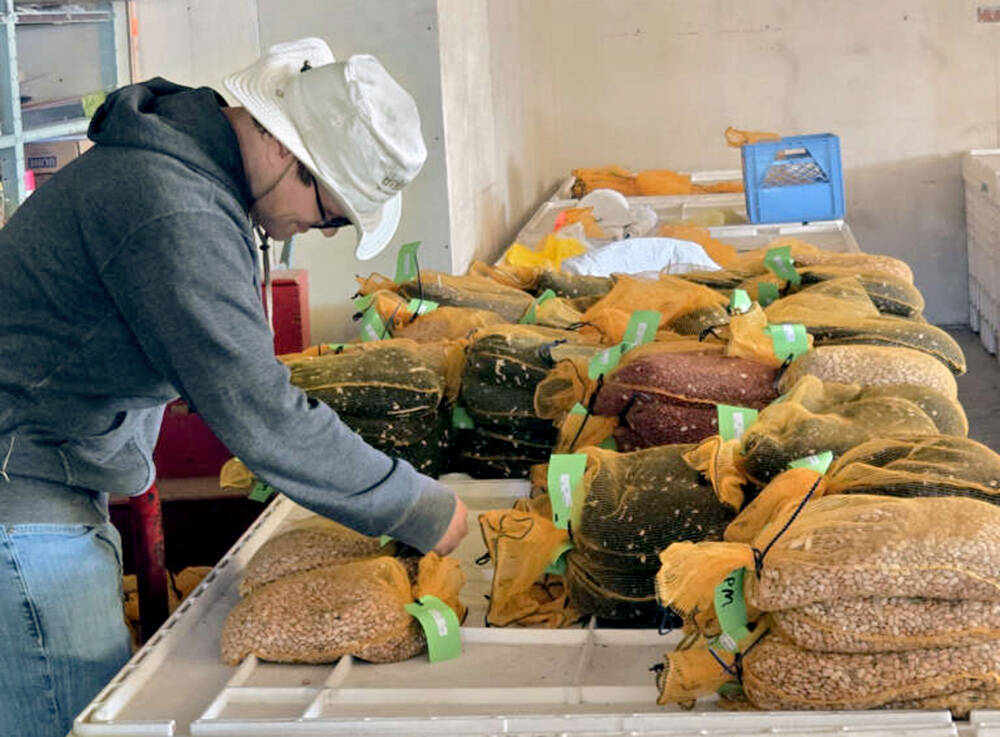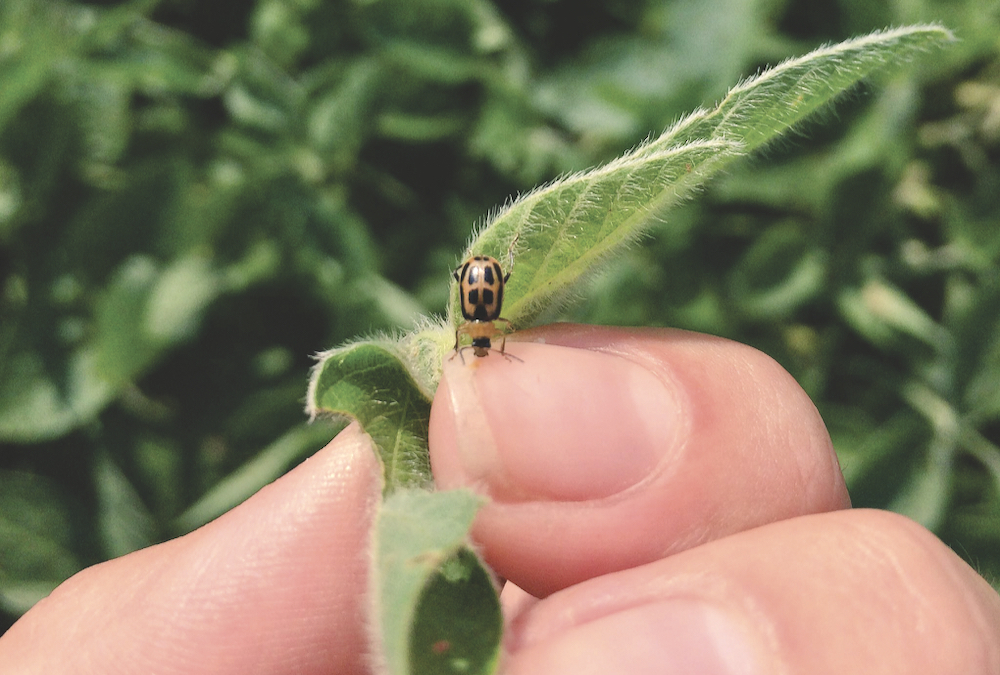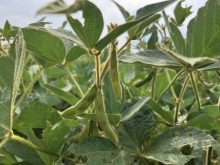Bean leaf beetle, spider mites and aphids are the soybean pests that growers should be watching for this season, say agronomists.
Why it matters: Soybean insects are sometimes overlooked during the season and if not quickly identified they can cause serious damage.
Bean leaf beetle
Read Also

Bean research breeds community giving
University of Guelph dry bean researcher Dr. Mohsen Yoosefzadeh Najafabadi champions sustainability by donating surplus breeding program beans to support food security and community art initiatives.
Bean leaf beetles are among the more common soybeans pests in Ontario. They overwinter in crop residue or fence rows and move into alfalfa fields in spring. Once those fields are cut, they move into soybean fields and feed on the seedlings, clipping them or defoliating leaves.
But that’s not the real problem, says Horst Bohner, soybean specialist with the Ontario Ministry of Agriculture, Food and Rural Affairs (OMAFRA).
“We can take that stand loss. Typically, what happens is then of course they lay their eggs on the soil surface, and then when they emerge, they start to feed on the crop in early July to mid July, right through to August,” he says.
Bean leaf beetles are a distinctive pest and can be identified by the black triangle at the base of their wings.
They cause the most damage when feeding on pods because they can clip them off but more commonly, they feed on pods and the damage allows disease to enter. Quality issues can then occur, especially in identity preserved beans.
Treatment threshold for these pests is approximately 10 per cent damage to the pod.
“We have to scout for them now and if they reach threshold, then a foliar insecticide application is warranted, especially in those IP beans,” says Bohner.
He suggests using an insecticide if the field has a history of bean leaf beetle.
“[It] really reduces the load of the overwintering population. Then you don’t have as many eggs, of course, or as many in that in-season generation because you’ve reduced the overwintering population feeding on the soybeans.”
Soybean aphids
Growers are likely familiar with aphids. They damage the plants by sucking the plant “juice”, the photosynthate, with their piercing mouthparts.
“The threshold is 250 aphids per plant, with increasing numbers on 80 per cent of the plants,” says Bohner.
“We notice that if aphids become a bigger problem, it’s usually later in the season, after the flowering period, early August timeframe, where if the infestation is severe enough that we would use a foliar insecticide to control some of the aphids,” says Marc Maisonneuve, Corteva territory manager and crop protection specialist for Eastern Ontario.
The growing season will also determine the threshold for soybean aphids.
“If it’s dry, the plant can handle less aphid pressure. If it’s a really lush growing season, lots of moisture, you can afford to wait to spray the soybeans,” says Bohner.
“We sometimes [hear] myths where a high level of rainfall will wash off the aphids. The reality is, when you have a high enough infestation, they can still cause considerable damage and insecticide might be the right intervention at that point,” adds Maisonneuve.
Aphids can be difficult to control because there can be up to 18 generations within one growing season and the females are born pregnant.
“As you can imagine, there is exponential growth if the weather is conducive to them, typically meaning dry and warm weather, not crazy hot,” says Bohner.
“The yield loss from aphids can range from as little as a couple of bushels to as much as 20 bushels. It depends on the number of aphids, and how stressed the plant is from, say, drought conditions or if it has nutrient problems.”
Spider mites
Spider mites are a common mid-season summer pest when it’s hot and dry. They feed on the underside of leaves and cause a “sandblasting” effect, which stresses the plant. They are usually found on the edges or random parts of a field.
“These plants can be stunted or wilted. This sandblasting effect on the leaves makes it evident they’re very small little creatures,” says Bohner.
Spider mites are difficult to see with the naked eye. The best way to identify them is to shake a leaf onto a white piece of paper.
Treatment threshold for these pests is four or more mites per leaflet.
Spider mites are a significant pest in Ontario, especially within a dry year. The leaves will start to curl and yellow and some of the leaves may drop off, as is seen with drought stress.
“Some people don’t necessarily recognize right away that they have spider mites because it’s easy to misidentify as just severe drought stress or herbicide damage or something,” says Bohner.
If it’s a dry summer, all three pests may be of concern.
“Scouting is important. Check in those fields to make sure you don’t have these pests because you can have significant yield losses if left unchecked and if it’s a dry year. It doesn’t take much to lose 20 bushels if the numbers are bad enough in parts of the field,” says Bohner.













